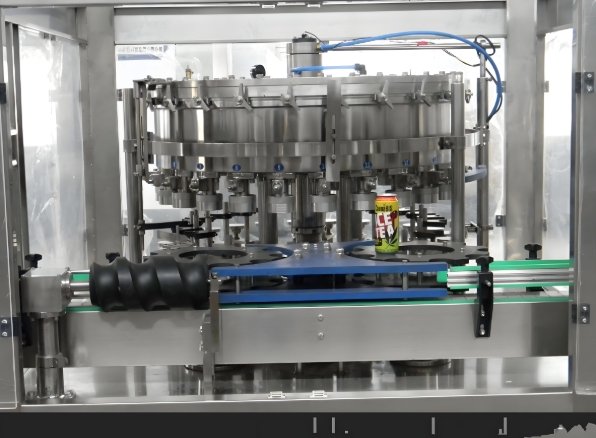
Filling beverages is a key part of production. Companies can choose between manual filling and using a Beverage Filling Machine. Each method has its pros and cons.
However, modern businesses often lean toward automation. An Automatic Filling Machine offers speed, precision, and efficiency. This article explains the differences and helps you make the best choice.
Why Manual Filling Was Common
Manual filling was standard for small-scale operations. Workers would pour beverages into containers by hand.
It required little initial investment. Small businesses with limited funds used this method. However, as demand grew, its flaws became clear.
The Challenges of Manual Filling
- Inaccuracy
Manual filling often leads to uneven levels. This wastes product and looks unprofessional. - Time-Consuming
Filling by hand is slow. High-volume production becomes impossible. - High Labor Costs
Manual processes need many workers. This increases expenses. - Inconsistency
Different workers may fill containers differently. Quality control becomes difficult. - Hygiene Risks
Manual handling increases contamination risks.
The Rise of Beverage Filling Machines
A Beverage Filling Machine changes everything. It automates the filling process. These machines deliver fast, accurate, and consistent results.
An Automatic Filling Machine reduces labor needs. It handles large volumes efficiently. Businesses of all sizes now prefer automation.
Key Benefits of a Beverage Filling Machine
- Improved Speed
Machines fill containers much faster than humans. - Precise Measurements
They ensure consistent liquid levels. This reduces waste. - Hygiene Standards
Machines reduce direct human contact. This ensures better hygiene. - Cost Savings
While the upfront cost is higher, machines lower long-term expenses. - Scalability
Machines handle large orders easily. Businesses can grow without delays.
Comparing Costs: Manual vs. Beverage Filling Machines
At first, manual filling seems cheaper. There is no large investment in equipment. However, hidden costs make it expensive over time.
- Labor Costs
Manual filling needs more workers. Wages add up quickly. - Product Loss
Inaccurate filling wastes liquid. This increases material costs. - Slow Production
Time is money. Manual filling cannot meet high demand. - Frequent Errors
Mistakes lead to refunds or rejected products.
An Automatic Filling Machine reduces these costs. It delivers a faster return on investment.
Automation Boosts Efficiency
A Beverage Filling Machine speeds up production. It works continuously without breaks. This is impossible for manual labor.
Modern Automatic Filling Machines have advanced features. Some include:
- Adjustable filling speeds.
- Sensors for accurate liquid levels.
- Compact designs for small spaces.
These features make machines reliable and efficient.
Quality Control and Consistency
Manual filling depends on human accuracy. Mistakes are common. For example, overfilling increases waste. Underfilling may cause customer complaints.
An Automatic Filling Machine solves these problems. It fills each container exactly the same. This improves product quality and brand reputation.
Hygiene and Safety
Manual filling risks contamination. Workers touch containers and liquids. This increases health risks.
A Beverage Filling Machine follows strict hygiene standards. It minimizes human contact. Many machines use stainless steel, which is easy to clean.
Scalability for Growing Businesses
Manual filling limits growth. High demand overwhelms workers. Delays become inevitable.
An Automatic Filling Machine supports growth. It handles more orders without needing extra labor. Businesses can scale up smoothly.
Environmental Impact
Manual filling often wastes more liquid. Spills happen frequently. This increases the use of cleaning products and water.
A Beverage Filling Machine reduces waste. Its precision ensures fewer spills. Energy-efficient models also lower electricity use.
Choosing the Right Beverage Filling Machine
- Understand Your Needs
Know your production volume. Choose a machine that meets your requirements. - Check Features
Look for energy efficiency, precision, and adjustable speeds. - Consider Maintenance
Select a machine with easy maintenance. This reduces downtime. - Focus on Quality
Reliable machines last longer. They save money in the long run.
Manual Filling for Very Small Businesses
Manual filling still works for tiny operations. If production is minimal, it may not justify buying a Beverage Filling Machine.
However, as orders grow, manual filling becomes inefficient. Transitioning to an Automatic Filling Machine is essential for scaling up.
Innovations in Beverage Filling Machines
Technology makes machines smarter every year. Modern Automatic Filling Machines feature:
- Smart Sensors: Detect liquid levels for precise filling.
- Touchscreen Controls: Simplify operation.
- Compact Designs: Fit small production spaces.
- Energy-Saving Motors: Lower electricity use.
These innovations enhance efficiency while keeping costs down.
The Verdict
Manual filling may seem cheap at first. However, it limits growth and efficiency. Errors, slow production, and high labor costs hurt profits.
A Beverage Filling Machine transforms production. It saves time, reduces waste, and improves consistency. An Automatic Filling Machine also meets hygiene and safety standards.
For long-term success, automation is the best choice. Businesses that invest in machines see better results. Manual filling cannot compete with these advantages.
